
Time travelling with the Jupiter-9
by Dirk De Paepe –
You can see more of Dirk’s work at www.flickr.com/photos/keepnitgood. There’s a dedicated album with more pictures of the collie meeting and all are also available in higher resolutions. Click the pictures in this review for a better view.
There has been quite some thrilling articles about new gear lately on this website, like those about the M10. But it’s great that there’s a lot more to experience here, for which we can’t thank Steve enough. Today I’d like to take you in the opposite direction and contribute with something from the past.
If you’re a regular visitor, I’m sure the name Jupiter rings a bel. These somewhat exotic Russian lenses from the Soviet-era have been covered here several times, by Steve himself, as well as by several guest editors. Pretty recently – well, in fact, a good year ago – we could still read about the Lomography Jupiter 3+. This replica of the original Jupiter-3 is by many described as “not a lens for every day”, but rather as an “art lens”. Owning several original Jupiters, I can largely subscribe this statement. Although one can also get pretty “normal” images with the Jupiters (when stopped down), there are better options for that purpose. But if you want to add a vintage flair to your pics, the Jupiters come to the fore. Although they may fall somewhat short, when you compare their IQ in the usual way with modern lenses, there’s still enough in favor of this vintage glass, to make me really want to shoot with it from time to time.
The Jupiters with M39 mount are rangefinder coupled full-frame lenses. They’ll work perfectly with all M-mount camera’s, with the right (almost invisible) adapter. With a somewhat thicker adapter (or an extra one added to the M39-M, as I do) one can use them with mirrorless camera’s like the full-frame Sony A7 Series and Leica SL. But they’ll also work with smaller sensor mirrorless camera’s – in that case with a proportionally smaller field of view.
One could wonder if there still is some relevance for using old lenses with adapters on modern camera’s, since there are so much native lenses available. Well, I guess there is, if you like MF. First of all, the character of some of those classics are pretty unique and different from any of the available modern lenses. Therefore shooting those lenses can really inspire. I can state two things in this context. On the one hand, I’d probably never have produced pictures like those shown in this article, if I wouldn’t have owned any Jupiter. On the other hand, maybe I’d never had bought a Jupiter, if the Zeiss Loxia line would have been available at the launch of the A7 Series. One doesn’t miss what one doesn’t know. So let’s just give some more notoriety to the Jupiter name.
Another important matter is without doubt the budget. The Jupiters are not expensive at all. This means that you can expand your lens collection at much lower cost than with new glass.
And think of this. If you don’t want to spend the amount of money, needed for the average full frame camera system, but still you can’t stop dreaming about it: think about buying an A7 for less than $1000 and some classic lenses. You could be set for under $1750! Jupiter-9 (85/2) for around $200, Jupiter-8 (50/2) for $75 or Jupiter-3 (50/1.5) for $200 and as wide angle for instance a Canon FD 28/2.8 for around $75, throw in the adapter(s) and make your own calculation. You’ll have the whole system for less than the cost of a new Zeiss Loxia 21mm!
For most of my work, however, I will use the Zeiss Loxia line. This series has four members now, (21, 35, 50 and 85mm) which cover the majority of my shooting. So I guess it’s clear: I’m a manual focus guy at heart. I have tried out auto focus with Batis, but it doesn’t really do the trick for me. So IMO, for my camera, Loxia is about the best one can get. Still, from time to time, I just wanna go for something else. It’s kind of an urge that comes in waves, I guess. And as you know, if it itches you gotta to scratch…
So it’s not always Loxia. Recently, I use the Voigtländer VM 35mm f/1.4 quite a lot. I love this little marvel mainly for its compact size (converting my A7RII into a pretty discrete street camera), for its ergonomics (I just love the tactile experience), for its built (metal solid) and indeed also for its character and IQ (the barrel distortion, being its biggest flaw, is easily correctable by moving the designated slider in Photoshop to +7).
Another one of my all-time favorite lenses is the Canon FD85 f/1.2 Aspherical, which is a joy to use wide open with the focus peeking of the A7 Series. However, due to its size and weight, I find it not for everyday use. But it’s for sure capable of producing stunning IQ, with spectacular out of focus rendering. Regardless its age, it’s still at par with the high-res sensor of the A7RII.
These two lenses find their way to my camera on a pretty regular basis.
But let’s not deviate too far.
In this article, I’d like to put the spotlight on one of those exotic Russian marvels. Not the popular 50/1.5 Jupiter-3, but the 85/2 Jupiter-9, which – I can tell you right away – is definitely my favorite Jupiter. I own a few 85s, whereby I use this one only every now and then, indeed because of its IQ being “not modern at all”. Still I will never sell it. After all, sometimes I simply can’t resist its attraction. It’s old school all right – well, it’s just plain old. Its IQ can be debatable, not at par with modern hi-res sensors, BUT … I couldn’t care less! Simply because it can create a wonderful, pretty unique mood. That’s why I’m sometimes seeking recourse to this old chap, just to “time travel” – just to achieve that certain mood that brings me back to my childhood or even beyond. And its old school looks are the opposite of eye catching, which helps for discrete shooting.
(picture 01)
The Jupiter-9 is an excellent 85 for discrete shooting.
Good to know
Portrait photography is for many the most obvious application of this lens. However, I will use it mainly for discrete photography – on the street or at special occasions. The tele factor is often welcome for this kind of shooting. But I’m sure its scope can be much wider.
This Jupiter-9 is basically a soft lens, with less dynamic range, and micro contrast than modern Zeiss glass. Why do I compare with Zeiss? Well, as a matter of fact, the 9 is kind of a replica of the pre-WW2 Zeiss Sonar 85/2.0, licensed to be manufactured in, by and for the USSR as part of the damages that were to be paid after World War 2. So although the production is from after the war, the design and therefore the character and the specifications are from the pre-WW2 era.
It comes in different versions. Mine is a black one with M39 screw mount. A wafer-thin adapter transforms it into an M-mount lens. I permanently have such an adapter on each of my Jupiter lenses, so I can easily use them in combination with other M-mount glass with the same M-to-E adapter – this was in fact my normal way of working, before Loxia came along.
(picture 02)
The wafer-thin adapter turns the Jupiter from M39 screw mount into an M-mount lens.
The aperture can be set from f/2 to /22 with a smooth, click-less ring. The ring rotates a bit too smoothly, IMO. One has to check on a regular basis, if the aperture is not displaced.
The focus ring on my copy has its hard stop exactly at infinite. This is presumably exceptional and due to intensive service work, done by the house that sold it to me, because on my other Jupiters (-3, -8 and -11) the hard stop lies just a bit beyond infinite. The minimal focus distance is 1,15m, quite a bit further than with more modern 85s, but its throw is no less than 180°. This yields a more detailed distance scale (it reads …, 5, 6, 8, 12, 25, ∞, the distances are only indicated in meters) and a much larger than average DOF-scale. This helps a lot when zone focusing, which often is not that obvious on an 85.
(picture 03)
Click-less aperture ring, detailed focus ring with hard stop at infinite, large classic DOF-scale, 49mm filter size.
One of the extraordinary features of this Jupiter is that it has no less than 15 blades for its aperture. This provides a very beautiful out of focus rendering and smooth bokeh, even stopped down. Those blades make for one of the most desirable features of the Jupiter-9, but at the same time they probably constitute this lens’s most important frailty. I once ruined a 9, because some of those blades got loose from a shock. Since those old Jupiters are not that expensive to buy (you can find a 9 for 150-250$ on ebay), the damage made it in fact a “total loss”. But it speaks for how much I love this lens, that I looked for and found an even better replacement the very same day on ebay. This is the one in these pictures.
(picture 04)
No less than 15 aperture blades assure a smooth out of focus rendering, even stopped down.
The Jupiter-9 is a very compact 85, when compared to more modern lenses. The Zeiss ZM Tele-Tessar is comparable in size indeed, but that’s an f/4, while the Jupiter is an f/2. The Loxia 85 is called to be a very compact 85, but just compare this f/2,4 to the faster f/2 Jupiter. The Batis is in turn a lot thicker, roughly the same size of the Canon, which is an f/1,2!
So I have put those five 85s of different ages in a row. The two newest ones are e-mount, the other 3 are M or transformed to M-mount (that means I keep an adapter to M permanently on them). To make a better comparison in the picture, I have posted the three M-mount lenses a bit higher, to compensate for the difference in FFD (flange focal distance).
(picture 05)
Size comparison. From left to right, young to old: the Zeiss Loxia Sonnar f/2.4, the Zeiss Batis Sonnar f/1.8, the Zeiss ZM Tele-Tessar f/4, the Canon FD f/1.2 Aspherical and the Jupiter-9 f/2.
Shooting with the Jupiter-9
This is not a typical lens review, since I’m not a professional photography reporter. Although I share some knowledge and “user experience”, still I don’t try to cover every aspect, or go over every single parameter. I mainly want to give you a few examples of what can be done and why I sometimes really wánt to use this lens, in disregard of its “inferior” specifications, and although I own some more modern 85s. I just wanted to show you that there are different paths to applying this lens in a creative way. In any case, I believe it’s important to think before shooting, about what kind of atmosphere you are pursuing, so that you can set the parameters right for it and do the appropriate post production work later.
When I use it, I want in fact to take benefit of one of its “flaws”, trying to turn this “weak parameter” into a creative advantage. Therefore I’ll slightly amplify it, while slightly correcting others. Those alterations need to be dosed very carefully however, not to overdo them. Of course there’s an important matter of personal taste in this. I guess this procedure is my own interpretation of the “art” factor of this lens. In this article I’ll give a few examples of two parameters that I treated in this way: micro contrast and color vibrancy.
Micro contrast
In the last series of pictures that I shot with the Jupiter-9, I wanted to create a mood that gave me the same feeling as what I got from old pictures from before WW2, as I remember them from the era when my parents were youngsters. So for me, it links to the mood that I got from stories that I was told from those times. I do believe that our society also evolves on an emotional level. These old pictures trigger my fantasy, creating in my mind an imaginary, bygone world of emotions… Of course this is a very personal matter. I can’t speak for you or anybody else, but I can tell you that it can have a pretty strong impact on my mood. My goal was not that much to faithfully recreate the old style of those pictures, rather than just to add this particular mood. And this Jupiter helps me herewith, better than any other glass I own. In fact, it was owning this lens and looking at its results that gave me the idea of exploring it’s character in specific ways. I guess I would not ever have taken this path, if I didn’t own a Jupiter. Of course, to achieve this desired mood, I needed those pictures to be in black and white.
They were all shot at a yearly meeting of American Collie-owners in Zeeland, at the border of the Scheldt river, in the south of The Netherlands. My approach to the event was mainly to picture the people, with the dogs as an accessory, rather than to produce typical dog pictures.
As I said, I concentrated on the lesser micro contrast – a typical feature of pre-WW2 pictures. So as a general treatment, I lowered the micro contrast a bit further in post – very slightly and on a base of individual judgement for every single picture. At the same time I added a tiny bit of unsharp mask, again with individually decided settings. I believe this to be necessary when using the Jupiter on the hi-res A7RII for this kind of work – particularly because I often need to crop afterwards, when photographing at such an event. The unsharp mask can come in handy to somewhat mask the lens’s lack of detail resolving power. Further, I applied some inverse vignetting, which, besides adding to the mood, often enhanced the pop-up of the subject from its background. Those are the general pp-measures, although one can’t generalize – there’s no one setting of parameters that fits them all. But once you know the path, the process doesn’t take too long.
Because the lens is really véry soft wide open, I’ve decided to put the aperture to /2.8 for all (but one) of these pictures. This increased the detail enormously, without really compromising the bokeh – a wonderful feature, thanks to the 15 blades. But knowing the work I was up to, needing some cropping power, I reckoned it to be necessary to give priority to the gain in detail over reducing the DOF to the very last bit. In one of the pictures, the aperture was unwillingly shifted to f/2. As I said, I find the aperture ring to be a bit too fluent, so this is what happens when you don’t constantly check the aperture.
Nice to meet you!
This is a nice example of the special mood that the Jupiter-9 can create. This picture took great benefit from the slight diminishing of the micro contrast, resulting in a very friendly softness, which doesn’t appear that much as a default, thanks to the slight application of unsharp mask. Also the 3D separation is remarkable and got explicitly better from the slight inverse vignetting.
–
Windmills in the back
This is that one picture, accidentally shot at f/2, instead of the intended f/2.8, due to the exorbitantly smooth aperture ring. This is a pretty heavy crop. The picture clearly illustrates the tremendous softness of this lens when shot wide open. Even where it’s in focus, it doesn’t really get sharp. Nevertheless, I find it to have great mood, with very beautiful out of focus rendering.
–
Jana
This is as close to a portrait as I have shot that day. The applied inverse vignetting is very clear, as I remember portraits from family members that had died before I was born. It also helped to make the girl pop out of the background. The combination of soft, subdued micro contrast and a bit unsharp mask is, to me, kind of a modern interpretation of an old-fashioned mood.
–
Focus
Again a beautifully soft mood. The lowering of micro-contrast helped to get an almost equally tinted sky, with just enough nuances not to get sterile. I also like how the persons, next to the one who is looking to the lens, are getting slightly out of focus.
–
No french kissing please
I find this picture to illustrate the Jupiter-9 qualities very well. I particularly like the combination of softness and detail in the in focus area. And the wonderful bokeh comes as a great bonus.
–
Andreas
Different levels of front and hind bokeh in this one.
–
Nice dog
Again soft but clear detail and lovely bokeh.
–
Noticed
This is basically a fairly banal scene, showing some people that just arrived. But the Jupiter’s rendering turns the background into a surreal surrounding, because of the out of focus rendering but also because of the extreme softness. The slightly lowering of micro contrast contributes as well.
–
Nicole shooting
Just a nice example of how the Jupiter-9 can render beautiful skies and 3-D separation at the same time.
–
Knee up
In this one, again the separation is pretty spectacular.
All those black and white pictures benefited from the describe post production, although it may not be obvious with some of them. But during the process, the difference was unquestionable.
Color vibrancy
The Jupiter colors are different from modern Zeiss glass. Since the design dates from before WW2 and color photography really only became common after the war, I guess we can assume that this lens was designed with black and white photography in mind. Maybe that’s why it’s less vibrant, indeed, than more modern glass. But I don’t know if I want to call its colors “less rich”. For sure, they have a great warmth and, to say the least, an interesting pallet. So for the next pictures, I decided to inflect the color vibrancy a bit. Not by increasing them – which could be the obvious thing to do, in an attempt to “repair” this “feeble” parameter. No, I indeed believe it’s important to even highlight it a bit, to take greater advantage of the character. So the color vibrancy goes slightly down, which can require some compensation with the saturation. As always, I don’t have one fixed setting for this operation, but will make an individual estimation for each picture. In fact I always work on each picture individually, although it’s probably possible to create a kind of profile for a certain lens/intended result. My experience is though, that in working on each picture, not only do I constantly improve my skills by which I get faster and faster, I also get new processing ideas on a regular basis. Of course, it helps that I love the processing performance.
The first three pictures in this paragraph were taken almost on the same spot, in Vorselaar, Flanders, Belgium. They show three different interpretations of the above described processing. In those pictures, I pursued a larger DOF, so those were shot with stopped down apertures.
Vorselaar Castle
–
Castle with wet feet
–
Feelgood in Vorselaar Forest
–
Flying spoon
This last picture is an interior shot with available light. I find it to show the most important Jupiter-9 qualities: a specific and warm color pallet (I specifically love the nuances in the baby’s hair), a very kind way of rendering detail, with a kind of softness, combined with a kind of sharpness (like the dripping lips of the baby) and a wonderful bokeh.
Well, there’s a lot of personal taste and preference in what the Jupiter-9 produces. One can absolutely remain indifferent to it, given the outdated specifications. But for anyone who is not stuck in the never-ending drive for technical perfection, for anyone who loves to create mood and feeling, the Jupiter-9 offers so much to love. No, to me this is not a lens for every situation. But sometimes it just does the best possible job. And in regard of what it costs, it is so very worthwhile the purchase. With the Jupiter-9 you can buy the pre-WW2 mood in a lens that is manufactured in the fifties, sixties or even seventies. Just a wild thought: imagine Lomography coming with a remake of this Jupiter-9, as it did with the Jupiter-3. A pre-WW2 conceived 85mm, manufactured today. Wouldn’t that be great?…

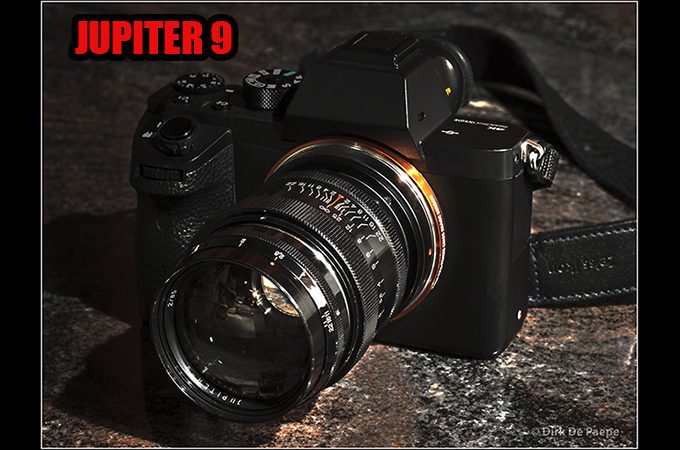
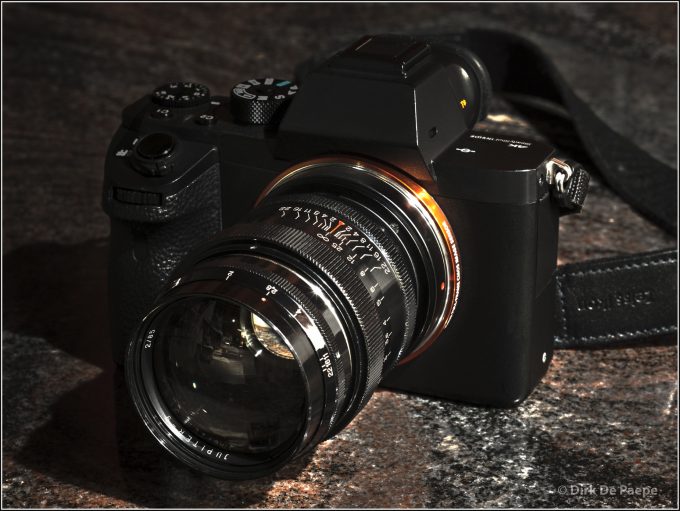
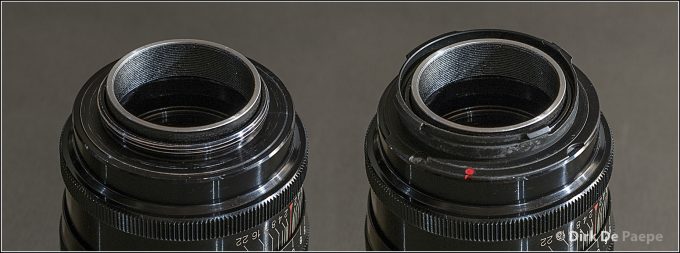
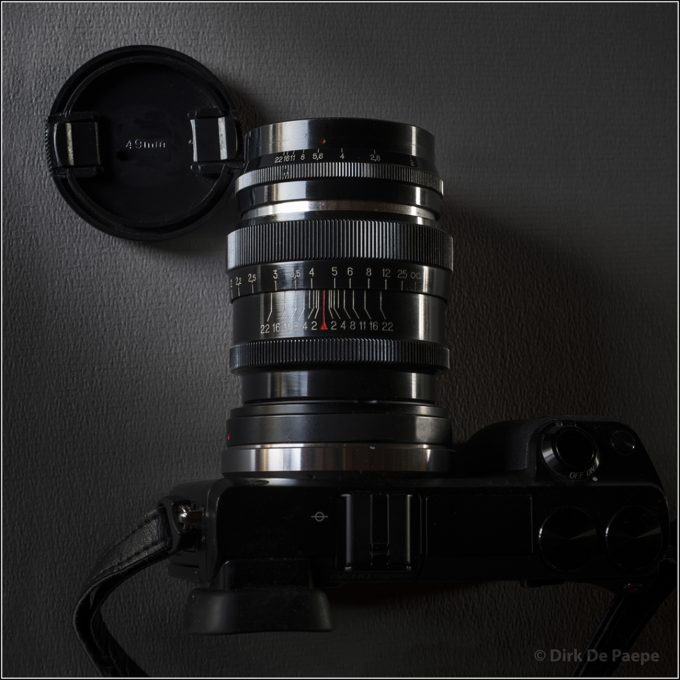
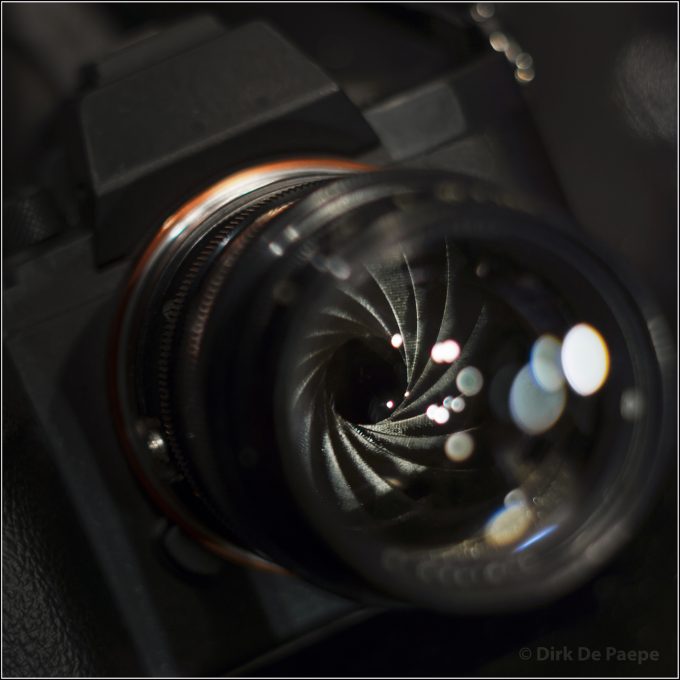
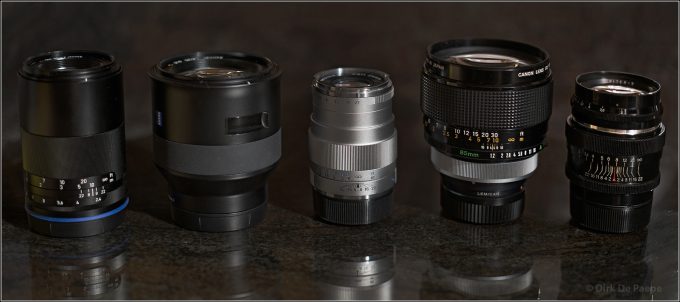
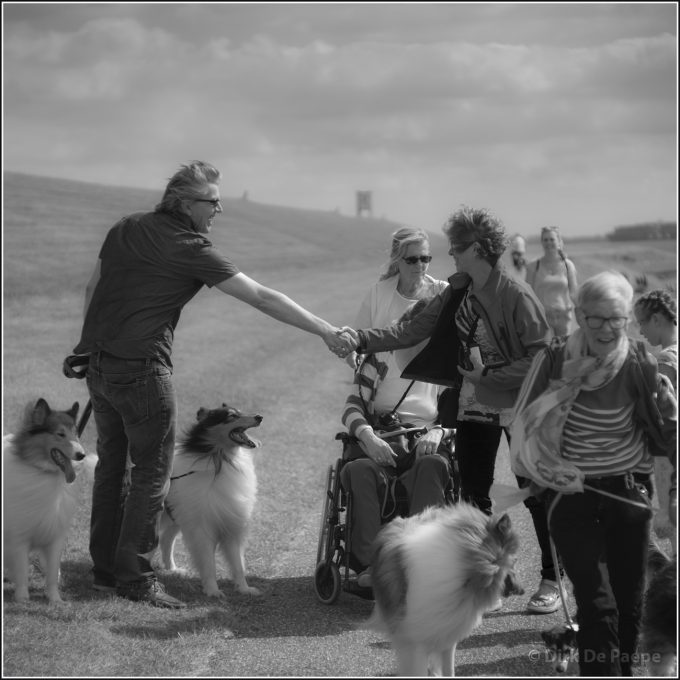
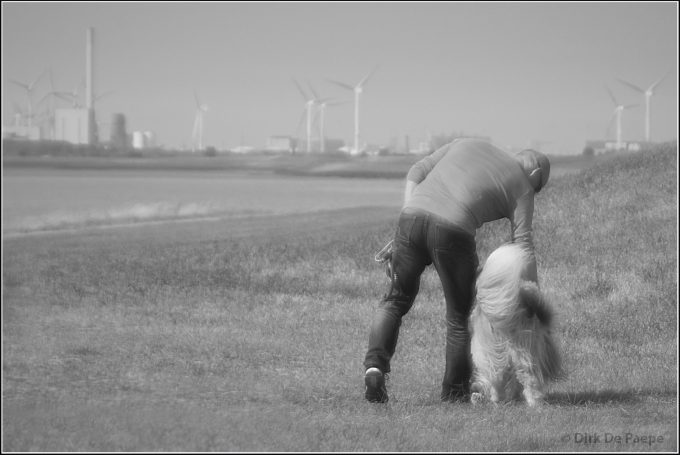
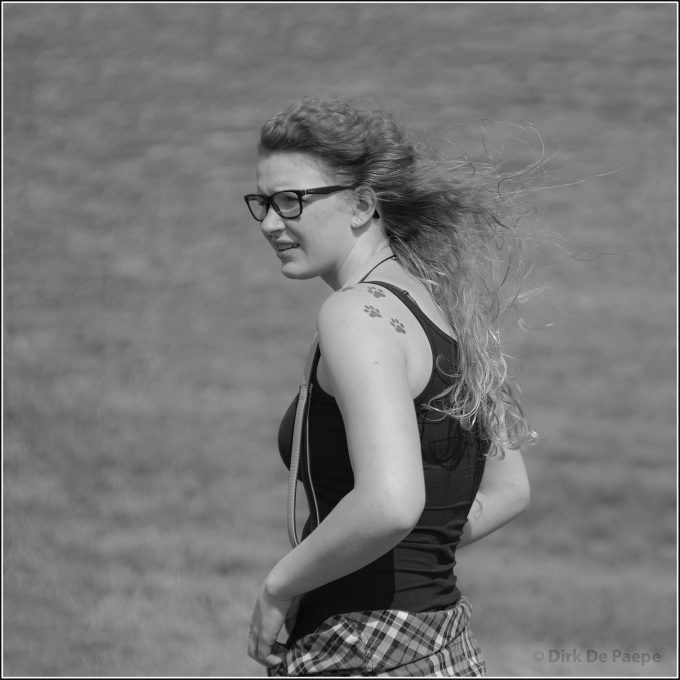
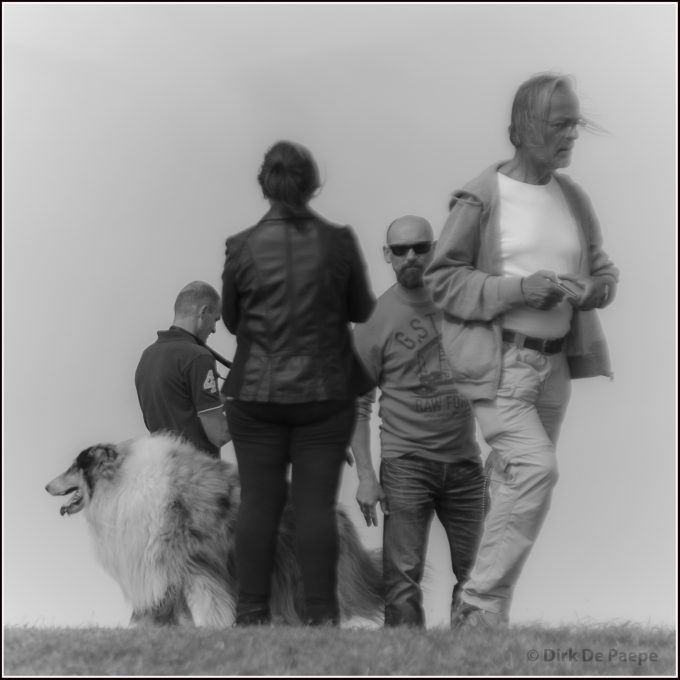
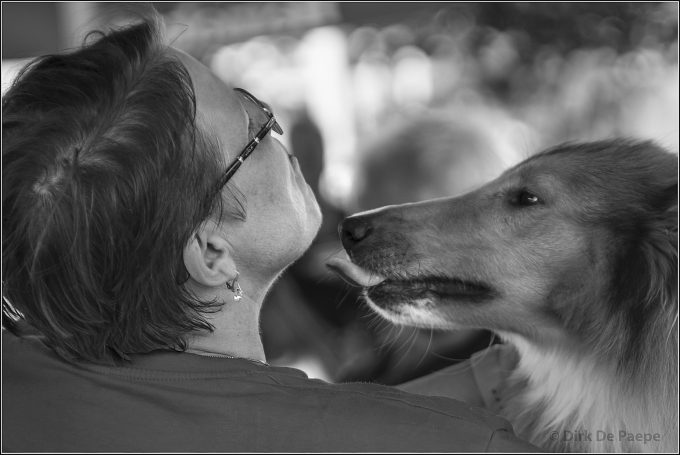
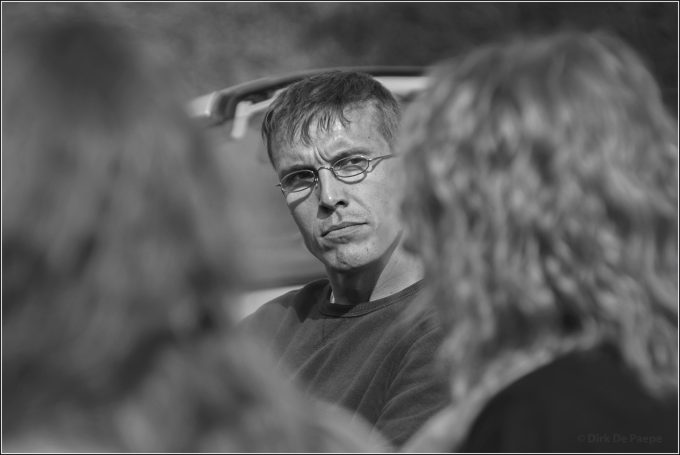
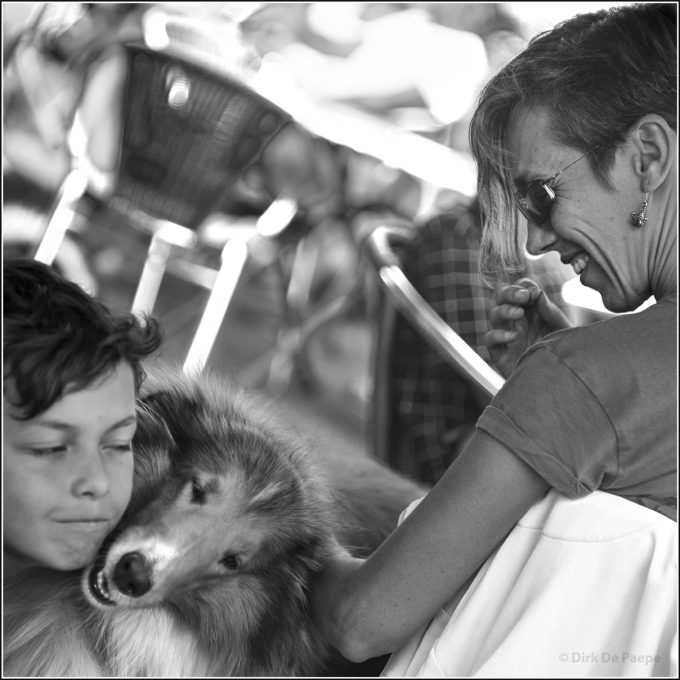
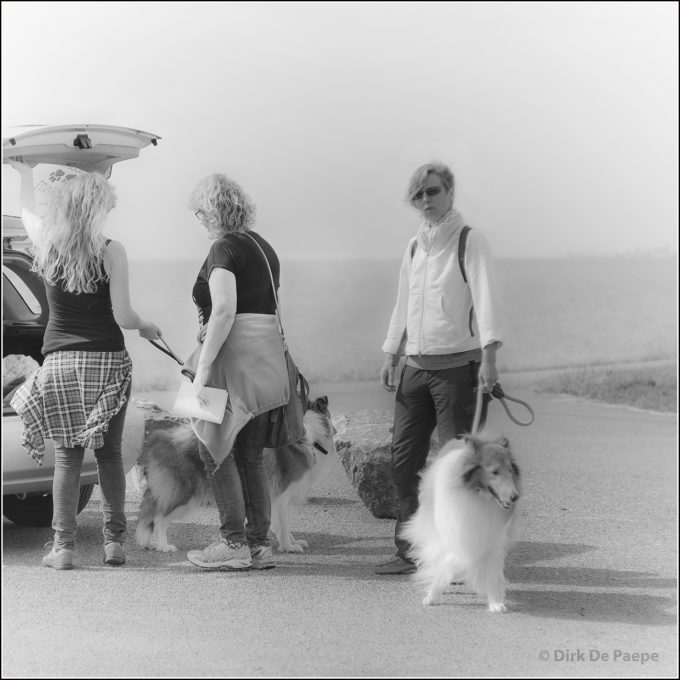
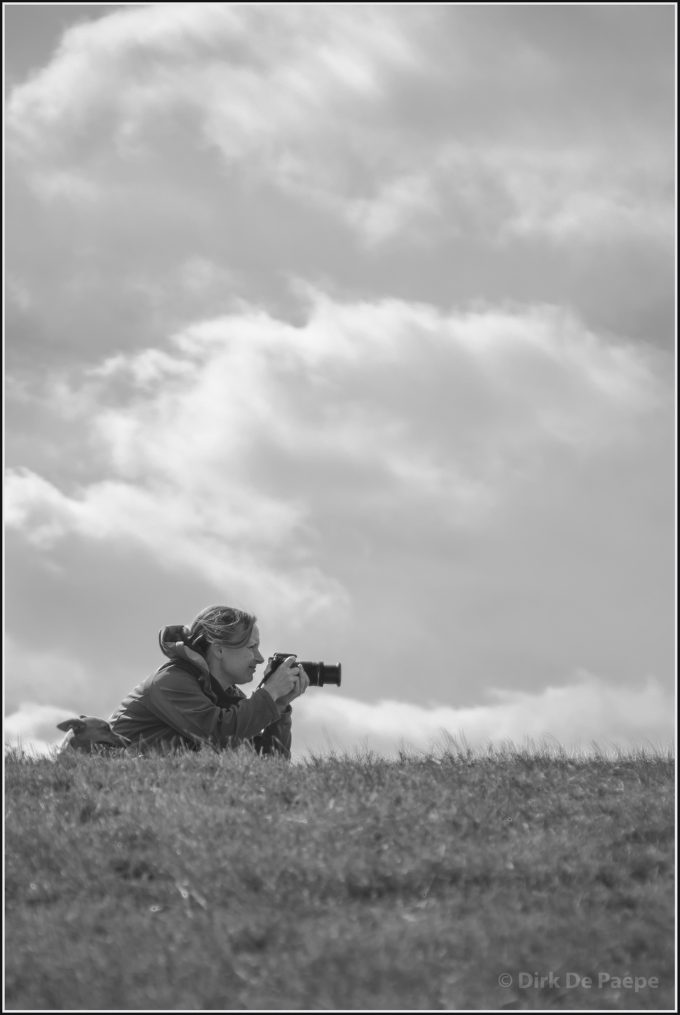
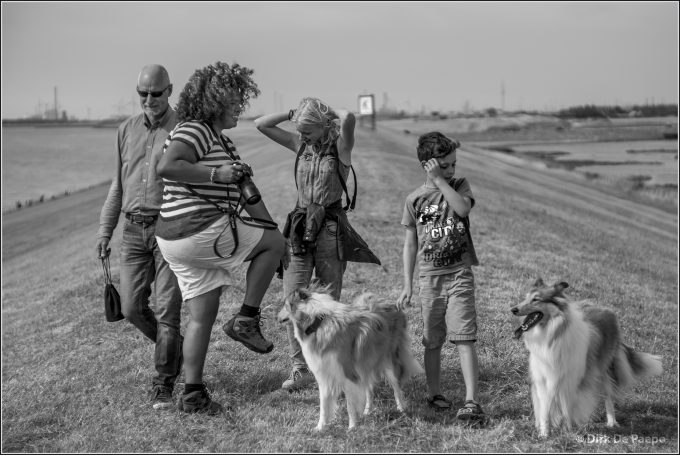
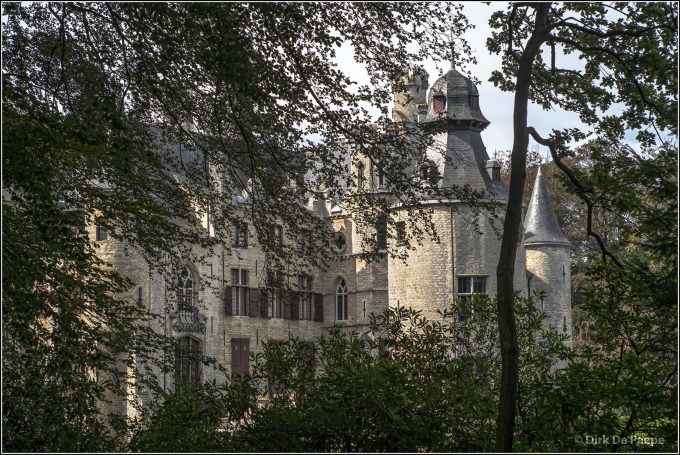
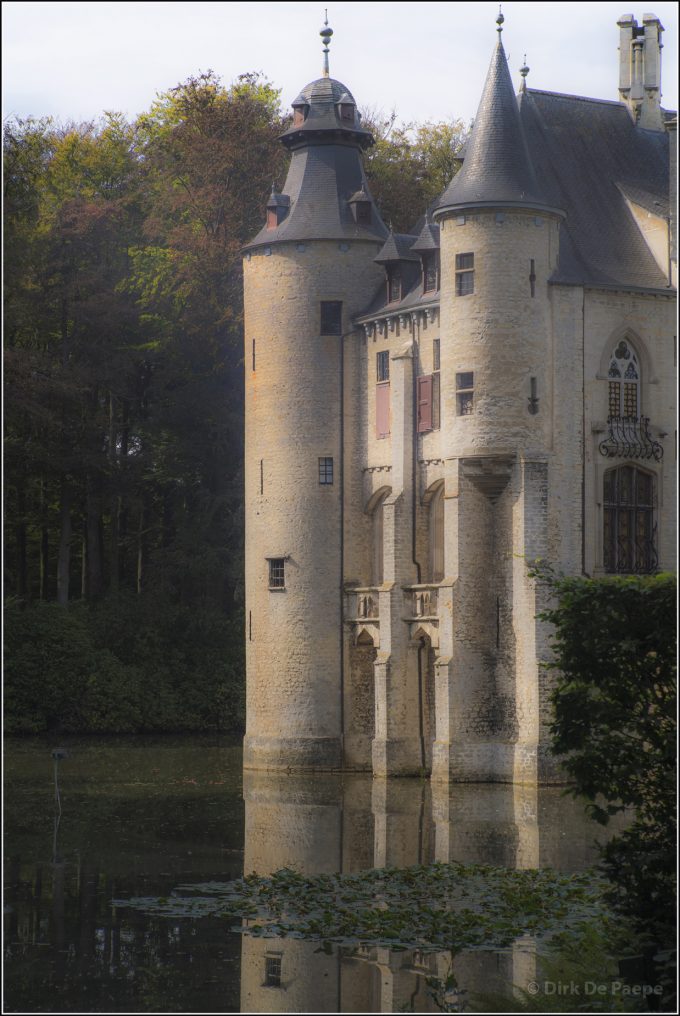
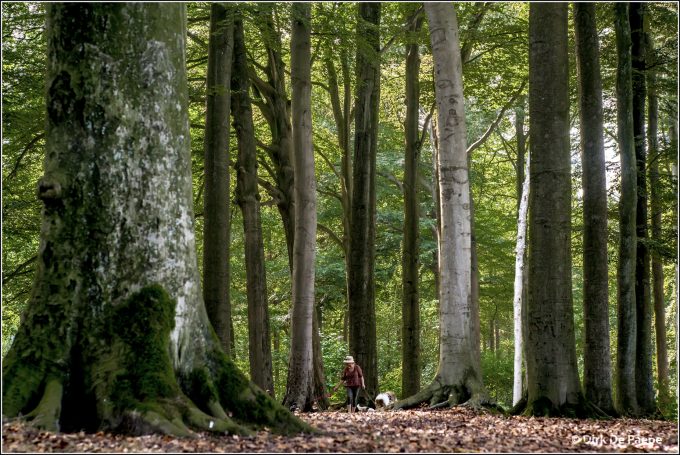


@ Mauricio, Fergus and Randie:
Thank you so much, guys, for your appreciation. It motivates to continue.
I purchased one of these new in m42 about 12-14 years ago shipped from the factory in Kiev. You don’t mention “preset” aperture in your review, so maybe that’s changed since (has it?). The optical quality is indeed special, though according to some reviews this can vary from batch to batch. My copy is also not multi-coated, again I’ve no idea if newer versions are. Part of the retro appeal I suppose.
Mine has pretty stiff focus action. The preset aperture allows for full-aperture preview & focusing, but it’s a bit of a bother to remember to stop down, also it’s a bit fiddly and can require enough force to change the aperture and partially unscrew the lens form the mount (!). Not real useful for dynamic subjects.
My final caveat is that the lens is very, very heavy. For all of the above reasons I now use it very rarely, favoring a much lighter and generally more responsive 135/2.8 with fairly excellent IQ at all apertures.
The jupiter-9 excels as a portrait lens, no question.
Thanks for your reply, David. This seems to be quite a different lens, though. Indeed different examples can render and feel (slightly) differently, but yours seems to be opposite of mine in many ways. BTW, I don’t get why you chose the M42 version, which is so much bigger and heavier, made for SLRs. What camera do you use?
Thank you Dirk for your enthusiastic review,
I am a sucker for old lenes too and love to use
the Nikkor Pre-Ai series on modern Nikon DSLRs.
If you ever feel the need to try out one of them
the Nikkor Q 2,8/135 is a Bokeh machine
the Nikkor P 3,5/55 Micro is sharp like a knife
the Nikkor O 2,0/35 a dream for street
the Nikkor P 2,5/105 the ultimate portrait lens !
Thanks for a super post . There is something really beautiful in the rendering of these lenses.
I can see how people can be intrigued and even become a little obsessed by these vintage gems. I don’t have the time to indulge this myself but am glad others do. It’s becoming very difficult to generate something a bit different these days – maybe this is one way you can.
Very nice article, I’m also a Jupiter9 fan, but I have the silver version, m39 mount, the render is a bit different, I think getting this lens is kind of luck game, check my article (in spanish), but the pictures are from that silver version.
http://www.mauricaldi.com/blog/2015/1/14/jupiter-9-y-su-hermoso-bokeh
Mauricio.
Thanks Stuart, Peter and Edward for liking my pictures. 😉
Good story and moody set of pictures. This article is right on time for me, as I’m learning how to live with jupiter. I went for it because, I wanted my pictures to be less perfect and clinical.
Worth mentioning, that with jupiter 9 you can creatively use one more imperfection – crazy flare and ghosting: http://www.beautifulgrain.com/digital/jupiter-9-lens-test-shots/#more-493
Thanks for commenting, Aivaras. Indeed, also flare and hosting can be used creatively.
Do not buy a Jupiter-9 and expect it to work properly on a Leica across the focal range: the J-9 is built to the Russian Standard. It will not, most cannot, be brought to the Leica standard. The last one I did manage to bring to the Leica standard required moving the optics from a 1950s KMZ J-9 to a much later J-9 and to shorten the focal length by filing down inner optical fixtures. So what do I do with it! Trade it to a photographer that sends me a lens that cannot be modified. I’ll use it on mirrorless, like the OP.
https://www.flickr.com/photos/90768661@N02/albums/72157662876531263
The J-9 is a true Sonnar 7-element in 3-group copy of the pre-war Zeiss 8.5cm F2, which “if ever” made in Leica mount is unbelievably rare and expensive. It cannot be moved to a J-9 mount as can the 13.5cm F4, 5cm F1.5, and 5cm F2.
But- you can use an Amedeo type adapter for it,
https://www.flickr.com/photos/90768661@N02/sets/72157647944078012
Mine is custom cut to allow correct focus across range.
The Best, sharpest J-9’s are from the 1950s, made by KMZ. If you have mirrorless, get one of those. If you have an RF only camera, by a late Black J-9, remove the secondary shim for the rear module, then move all the glass from the 1950s lens into it. I hope the guy that had THAT lens appreciates the hours put into it!
BTW: Great pictures! The later J-9’s are nice, a great soft protrait lens. The earlier ones rival Zeiss.
Thanks for this info. The standpoint from an RF used can of course differ from mine. Why don’t you share your knowlage and experience 5uwith us in an article? I guess that could be helpful for many RF users.
Thanks- I should do an article on my Sonnar 5cm F1.5 conversions for Steve. I documented the procedure for shimming J-3’s for Leica and converting the Sonnar to Leica mount, Jason Howe hosts them on his site:
http://aperturepriority.co.nz/50mm-jupiter-3-f1-5-information/
For the Jupiter-9: calculated that the rear group needs to move in 3mm, but the most I could get was 2mm due to construction of the lens. But- it got close enough to use with the RF over full range.
This weekend’s project was converting a pre-war 13.5cm F4 Sonnar to Leica mount, using a J-11 focus mount. I got very lucky on that one.
Thanks for the great article! Love to see the Jupiter 9 getting some much-deserved love, and I really like how you’re using it. It’s one of my favorite lenses. It may not be as sharp as modern lenses, but my copy at least, is not nearly as soft as as what you’re showing here. Some of the softness in your pictures is not from the lens, but (perhaps) slow-shutter motion blur and the post processing you’ve applied. Except for the color baby/mom picture (which is great) you’re not showing what the lens is famous for, frame-filling portraits. I guess, you’re assuming people know this, but here’s another example: http://www.rangefinderforum.com/rffgallery/gallery/46679/U46679I1482949158.SEQ.0.jpg
Thanks for you appreciation, Ny. You’re right. As I wrote, I enhanced the character slightly, concerning softness and micro contrast, so it’s indeed the pp, not the lens. And you got it right about the last one. It didn’t really need any “enhancement”, to show the typical warm vintage colors of the Jupiter. And indeed I assume that, if people know the Jupiter-9 it’s for its portraits and if they look for J-9 pictures, it’s mainly portrait what they’ll encounter. I didn’t feel for adding more of the same, but rather liked to show something less obvious, something that I find thrilling, something that one can achieve with this lens better than with the modern ones.
I bought a Jupiter9 on eBay direct from Russia about 2 months ago. I’ve been able to get great images with it on my a7ii. It is challenging to get focus at f2, even when you do it’s soft, from f2.8 it’s much easier to achieve focus and nice and sharp. I’m really enjoying this lens and very glad I spent the relatively small amount of $260 (Australian $) it was well worth it!
Thx for reading, David.
This is so great. I’m 100% in favor of using alternative methods to achieve unusual goals, photographically. I might just get this lens, now! Thanks!
Very nice article. You have inspired me to get mine out, match it up to an m4/3 camera and give it a run. I have had one for years and put off by the fact that I never had any luck focusing it on my Leica stopped using it leaving it to more or less gather dust. Well done indeed.
Great shots… I agree that ‘mood’ may be more important in the photograph than sharpness….85-90mm lenses are special, too, in that they bring the subject a bit more into play than a normal lens by excluding some background elements….the viewer gets the closeness of the picture without the exaggerated perspective of a normal or wide angle lens having to get in close to the subject to get the same cropping effect.
Stuart